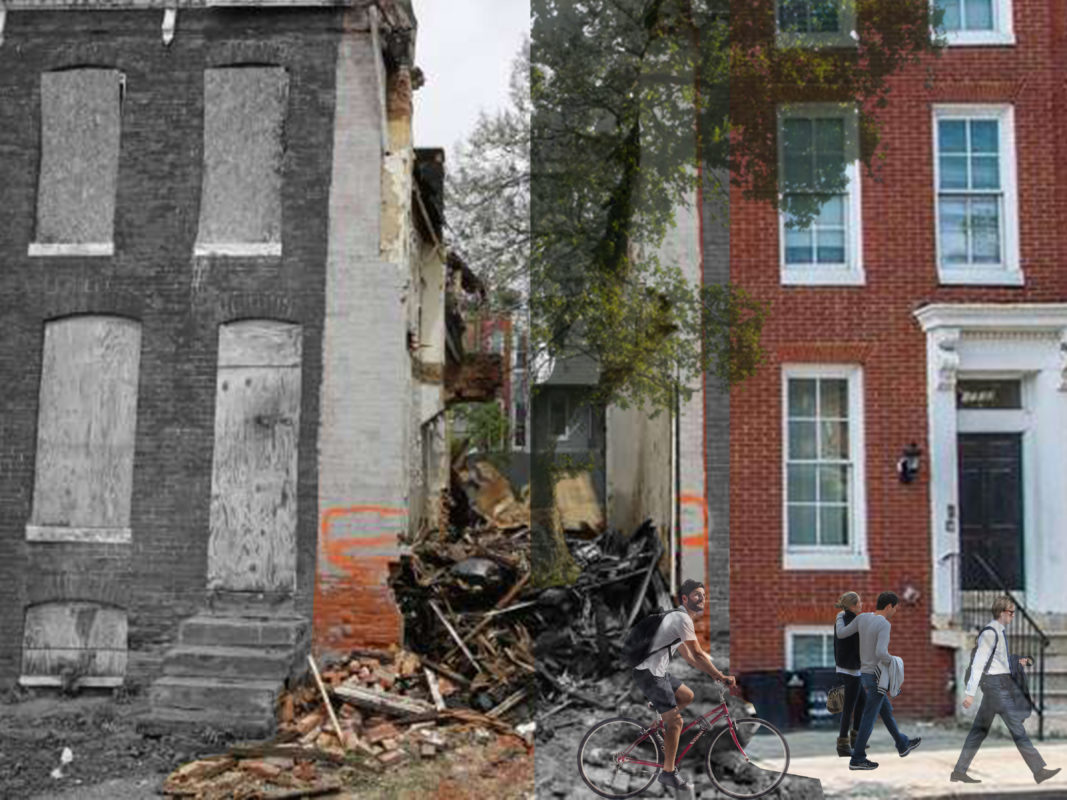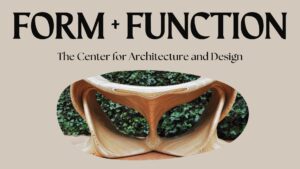
Collage by Mitchell Pinkney Jr.
On view May 9 – June 18, 2018; 9:00 am – 5:00 pm
AIA Baltimore Gallery, 11 1/2 W. Chase St., Baltimore, MD 21201
Following a tradition of socially responsible design for the built environment at Morgan State University, candidates for the Master of Architecture degree will exhibit their terminal design projects at AIA Baltimore.
Each student has developed the program and designs for their projects from start to finish, marking the culmination of graduate studies in architecture. The project types include an immigrant-focused housing proposal, an alternative learning environment for children, a community recreation park, a multisensory “utopia” to enhance our experience of architecture, and six more impressive graduate student projects.
Studio Instructors: Ruth Connell AIA, Associate Professor and Coleman Jordan, Instructor.
Program development during the preceding fall semester was under the instruction of Dr. Mohammad Gharipour and Coleman Jordan. The studio design effort has been enriched by the generous contributions of these mentoring architects, and others: Joshua Bereznay; Anthony Consoli, AIA; Frank Fantauzzi; Brian Grieb, AIA; Karen Hill, AIA; Julian Hunt, AIA; Jason Knight; Lucrecia Laudi; Craig Martin, AIA; Lance Moore; Christina Murphy; Justin Obringer, AIA; James Pettit Jr., AIA; Laura Thul Penza, AIA; Adam Read, AIA; Balaji Srinivasan, Assoc. AIA; Michael Stanton Jr.; Lori Rubeling; Nick Tomaszewski, AIA
See work by the following students:
Comfort Abimaje
Multisensory Utopia – Architecture is often experienced in the visual realm, but it has the ability to stimulate the other senses. Buildings need to connect with humans and the environment around them; if unsuccessful, there is a tendency for a sterile and monotonous experience.
Abdultattah Almasari
Cohesive Kitchen – How can architecture facilitate social cohesion in North American neighborhoods through technology? Social cohesion in neighborhoods between residents is an essential to building a healthy environment. In this project, social engagement fosters physical heath, mental health and social heath in the community.
Briana Blowe
Off-the-Books Academy – How can an alternative learning environment engage underprivileged K-6 children in education and health through technology? Children are not engaged by traditional educational teaching methods in public schools. The goal is to create an alternative learning environment that is flexible, collaborative, active and hands on with the help of digital media.
Andrew Fuller
Communal Grind – Community skateboard and recreation park, combined with housing services and resources for at-risk youth in Madison-East End. Through architecture, the line between resources and recreation for urban at-risk youth can be substantially blurred. Structures pose unique opportunities for social engagement. Buildings become part of the landscape. In turn, intentional planning creates a multi-use community amenity.
Amberlyn Kauffmann
The Game of Life – Collaboration of Community and Public Health. How can architecture integrate public health services and prevention techniques to yield an equitable system within the built environment? Through architecture, multidisciplinary public health services are integrated for residents across generations. Substance abuse rehabilitation and family planning centers benefit the public greatly. Surrounding this program with interactive games breaks the stigma of visiting such services.
Nkiruka Jane Nwachukwu
How can visual and performing arts be integrated into the built environment to help people with mental health disorders in an urban community? This architecture uses the four natural elements: air, earth, fire and water, and incorporates the healing effects of visual and performing arts as a therapeutic tool to provide a calming effect for people with PTSD.
Juan Manjarres Perez
HABITAD: Immigrant Housing – HABITAD recognizes that poor living conditions have a negative impact on people’s success. This project proposes a housing solution for immigrants facing overcrowded living conditions. Its adaptive modular design aims to promote the immigrant’s economic development, positive assimilation and health outcomes.
Mitchell Pinkney Jr
The Authentic Community – How can architecture address segregation in neighborhoods decaying from urban blight? Architecture used as an intervention for blighted neighborhoods is often destructive to the existing community fabric. Architecture for blighted communities should instead grow from the community while being responsive to future needs.
Kara Sheikhattari
Community Engagement – How can architecture contribute to the improvement of social health, such as social capital and social cohesiveness in poor urban communities? Gentrification changes the culture and character of the neighborhood, and lack of social participation in poor neighborhoods should be addressed by modern design and use renewable energy to improve access to resources.
Zahra Williams
Nomadic Collective – How can artist contribute to the improvement of urban life in post-industrial cities impacted by urban renewal? En Plein Air Collective is a response to the living and making conditions for artists who are renewing post-industrial cities. This project explores an artist-operated space to live, make and exchange while interacting with community and inviting the public to engage.

